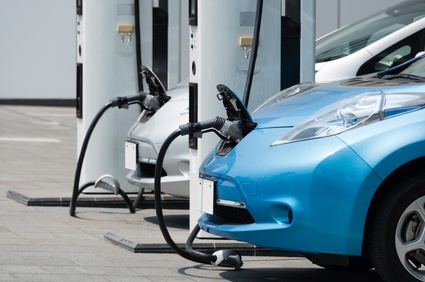Electric-vehicle subsidies

Ontario and Quebec each have plans to spend hundreds of millions of dollars to convince drivers to go electric. The measures in place are certainly interesting for buyers of electric vehicles. The problem is that they’re insignificant from an environmental point of view.
Insignificant, but not inexpensive: The two provinces encourage the purchase of an electric vehicle and home charging station with subsidies totalling $14,750 in Ontario, and up to $8,600 in Quebec.
Each time an electric vehicle replaces a gasoline-powered one, greenhouse gases (GHGs) are avoided. Over the course of the useful life of a vehicle, around 10 years, this represents approximately 28.2 tonnes of GHGs avoided in Ontario, and 29.9 tonnes of GHGs in Quebec, where electricity is produced almost entirely from hydropower.
The cost of each tonne of GHGs not emitted thanks to these provincial programs can then be calculated by dividing the cost of the subsidy by the quantity of emissions avoided. We thus arrive at a total of $523 per tonne in Ontario and $288 per tonne in Quebec.
Yet, the real cost is likely much higher.
The main reason is that a certain number of buyers of electric vehicles would have made their purchases even in the absence of subsidies. One study estimates that this is the case for half of buyers in Quebec. The proportion is likely much higher for most subsidies paid to buyers of luxury vehicles. (In Ontario, a buyer of a Tesla can receive the same subsidy as for a Volt.) This means that half of these subsidies, which will total hundreds of millions of dollars in a few years, are a pure loss.
But let’s put on our green-tinted glasses and assume that our estimates of $523 per tonne of GHGs not emitted in Ontario, and $288 per tonne in Quebec, represent the real cost, and that each subsidy is well-targeted and helps replace a gasoline-powered vehicle with an electric one. The price paid is nonetheless very high compared to the result obtained, and compared to other existing solutions for reducing GHG emissions.
Tax carbon
In the North American carbon market, which groups together California, Quebec, and soon Ontario, the price per tonne of GHGs, and thus the marginal cost for a company to eliminate this tonne, was C$18.51 in the most recent auction. The federal government, for its part, will tax carbon at $10 per tonne in 2018, climbing to $50 in 2022.
By subsidizing the purchase of electric cars, the Ontario government is paying 29 times more than the carbon market price, and 52 times more than the future federal tax when it comes into effect next year. For Quebec, the corresponding figures are 16 and 29 times more. Even if we take the maximum amount of the carbon tax, namely $50 in 2022, electric vehicle subsidies remain the most expensive option by far.
What about impact?
Another way of illustrating the inefficiency of these programs is to evaluate the portion of current GHG emissions that would be eliminated thanks to the replacement of gasoline-powered vehicles by electric vehicles. Even if the Quebec government achieved its goal of having a million electric vehicles on the road by 2030 (and assuming these were all fully electric), in the best case scenario, only 3 million tonnes of GHGs would be avoided annually, or 3.6% of current emissions, at a total cost of $4.6 billion to $8.6 billion. In comparison, the brand new Port Daniel, Quebec cement plant (itself the beneficiary of substantial subsidies) will emit nearly 1.8 million tonnes of GHGs a year all on its own.
The results would not be any more impressive in Ontario. Assuming that it achieved the same objectives, proportionally, that Quebec has set for itself, Ontario could not hope to eliminate more than 4.1 million tonnes of GHGs per year by 2030, or 2.4% of current emissions. This amounts to mere drops in the bucket.
Insofar as the reduction of GHGs is becoming a priority, the innovation that emerges naturally from the market remains the preferable path. If our legislators think that additional incentives are required, pricing carbon through a tax or a carbon market creates less distortion in the market than subsidizing the purchase of electric vehicles, which is expensive and will have little effect.
Germain Belzile is a Senior Associate Researcher at the MEI, Mark Milke is an independent policy analyst. They are the authors of “Are Electric Vehicle Subsidies Efficient?” and the views reflected in this op-ed are their own.
____________________
Read more articles on the theme of “Environment.”

